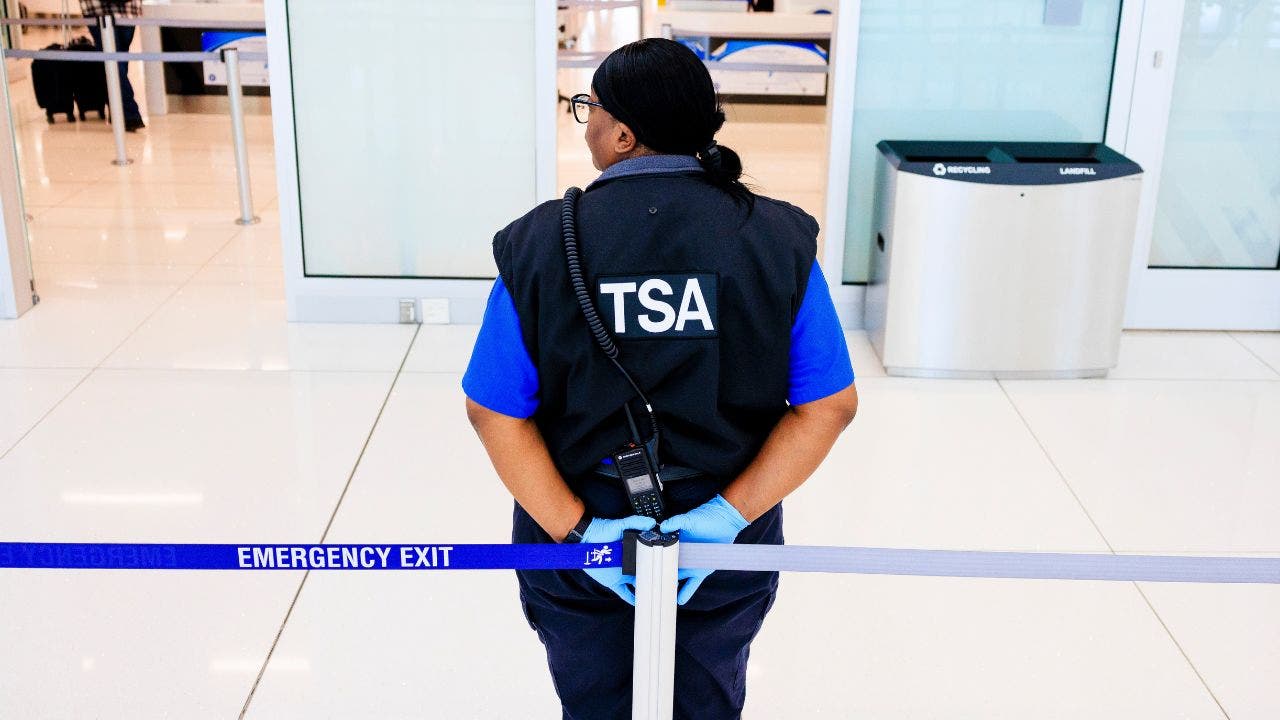NEWYou can now listen to Fox News articles!
Google has made Chrome even more capable. The browser can now fill in your passport, driver's license and vehicle registration automatically. This upgrade joins the list of time-saving autofill options that already include passwords, addresses and payment details.
Desktop users with enhanced autofill enabled will start seeing the new options right away. Chrome can even interpret complex form layouts and varying formats across different websites, improving accuracy with every entry.
How Google says it keeps your data private
Google says these new autofill features were designed with privacy in mind. This from a company which makes money off of capturing your most intimate details in life. Google says Chrome only saves sensitive data after you give permission. It also encrypts stored information so it's unreadable to anyone without your authorization. Before any personal info is filled into a webpage, Chrome asks you to confirm—keeping you in control.
UPDATE CHROME NOW: GOOGLE PATCHES NEW ZERO-DAY THREAT
Sign up for my FREE CyberGuy Report
Get my best tech tips, urgent security alerts and exclusive deals delivered straight to your inbox. Plus, you’ll get instant access to my Ultimate Scam Survival Guide — free when you join my CYBERGUY.COM newsletter.

Chrome’s enhanced autofill now saves and fills your passport, license and vehicle info with just a click. (Google)
Still, autofill exploits by hackers have been known to happen. Infostealer malware has been used historically to capture data entered into web fields manually and with autofill. It is not perfect, but Google and others have come a long way to secure their browser. Keep in mind, Google may ask to share your information with third parties, so be cautious when you give it permission.
Passport numbers, driver's license details and other official records are valuable to cybercriminals, so be careful when you share them online. As always, use the strongest antivirus protection on all devices to ward off trouble. See my 2025 review of the best antivirus protection at Cyberguy.com.
The company began rolling out these updates worldwide in all languages and plans to support even more document types soon.

The Google Chrome browser encrypts personal data and always asks for confirmation before entering sensitive information. (Google)
How to enable Enhanced Autofill in Chrome
For Windows and Mac (Desktop):
- Open Chrome on your computer.
- Click the three-dot menu in the top right.
- Click Settings.
- On the left pane, select Autofill & passwords (or simply "Autofill" depending on version).
- Click Enhanced autofill.
- Toggle On "Enhanced autofill" to allow Chrome to fill in IDs (passport, driver's license, vehicle info).
- To enter or edit saved data: while still in the Enhanced autofill section, select Add/Edit under "Saved information" and input your document numbers or vehicle info.
- Next time you visit a supported form (e.g., for vehicle registration or passport number), Chrome will prompt you to fill it in and ask you to confirm before submitting it.
OVER 2B USERS FACE PHISHING RISKS AFTER GOOGLE DATA LEAK

You can enable Enhanced Autofill in Chrome settings to securely manage and store official identification data. (Kurt "CyberGuy" Knutsson)
For iPhone
- Open Chrome on your iPhone or iPad.
- Tap the three-dot menu (bottom or top right) and select Settings.
- Go to Autofill & Payments (or similar label) and verify that "Addresses and More," "Payment Methods" and "Passwords" are enabled for autofill.
For Android
Settings may vary depending on your Android phone's manufacturer.
- Open Chrome on your Android device.
- Tap the three-dot menu (top right).
- Go to Settings → Autofill & payments (or simply "Autofill and forms").
- Under "Addresses and more" (and possibly payment methods), enable the types of info you want filled in automatically.
Note: The enhanced autofill update for passports, driver's licenses and vehicle details is still expanding to mobile. You may not see it yet on iPhone or Android, even with the latest Chrome version. Keep your app updated and check back periodically as Google continues the global rollout.
AI updates are driving Chrome forward
This upgrade follows a wave of artificial intelligence-driven improvements in Chrome. Recently, Google added Gemini integration for all desktop users in the U.S. and previewed new "agentic" features that use AI to automate everyday tasks. Future updates will include password reset suggestions, smarter scam detection and AI-powered form assistance, all designed to make browsing safer and more convenient.
CONGRESSIONAL BUDGET OFFICE HIT BY CYBERATTACK, RAISING CONCERNS OVER US GOVERNMENT NETWORK SECURITY

The rollout of Enhanced Autofill continues worldwide, adding support for more ID types and expanding beyond desktop users. (Kurt "CyberGuy" Knutsson)
Tips to keep your browser secure
Even with encryption, there's more you can do to protect what autofill stores.
1) Use strong antivirus software
Install trusted antivirus software on all your devices. It blocks malware that could record your keystrokes or hijack autofill data before encryption kicks in.
The best way to safeguard yourself from malicious links that install malware, potentially accessing your private information, is to have strong antivirus software installed on all your devices. This protection can also alert you to phishing emails and ransomware scams, keeping your personal information and digital assets safe.
Get my picks for the best 2025 antivirus protection winners for your Windows, Mac, Android and iOS devices at Cyberguy.com.
2) Use a password manager instead of browser storage
Dedicated password managers store and encrypt your logins locally, reducing risk if your browser gets compromised.
Next, see if your email has been exposed in past breaches. Our No. 1 password manager pick includes a built-in breach scanner that checks whether your email address or passwords have appeared in known leaks. If you discover a match, immediately change any reused passwords and secure those accounts with new, unique credentials.
Check out the best expert-reviewed password managers of 2025 at Cyberguy.com.
3) Enable two-factor authentication (2FA)
Pair your Google account with two-factor authentication (2FA). Even if hackers access your browser, they can't reach your autofill data without your secondary code.
4) Keep your browser and extensions clean
Type chrome://extensions and remove anything unfamiliar. Malicious add-ons are a common way attackers steal autofill info.
5) Use a data removal service
Even with Chrome's encryption, your personal information can still surface on data broker sites. A data removal service sends requests to these companies to delete your personal details, like your address, phone number and ID records, before they can be shared or sold. This lowers the risk of your data being used in phishing attempts or identity theft. Regularly clearing your digital footprint adds another layer of protection for Chrome's autofill feature. It limits what hackers could use if they ever gain access through a breached website or browser extension.
Check out my top picks for data removal services and get a free scan to find out if your personal information is already out on the web by visiting Cyberguy.com.
Get a free scan to find out if your personal information is already out on the web: Cyberguy.com.
6) Use a secure email for verification
If Chrome requests confirmation, make sure your linked Google account uses a private, encrypted email provider.
For recommendations on private and secure email providers that offer encrypted addresses, visit Cyberguy.com.
Take my quiz: How safe is your online security?
Think your devices and data are truly protected? Take this quick quiz to see where your digital habits stand. From passwords to Wi-Fi settings, you’ll get a personalized breakdown of what you’re doing right and what needs improvement. Take my Quiz here: Cyberguy.com.
CLICK HERE TO DOWNLOAD THE FOX NEWS APP
Kurt's key takeaways
Chrome's latest autofill update blends convenience with stronger safeguards. But security still depends on your habits. Taking a few extra minutes to manage extensions, enable 2FA and use privacy tools will go a long way toward keeping your personal data safe.
Would you trust your passport or driver's license info to Google Chrome's autofill, or is that a step too far? Let us know by writing to us at Cyberguy.com.
Sign up for my FREE CyberGuy Report
Get my best tech tips, urgent security alerts and exclusive deals delivered straight to your inbox. Plus, you’ll get instant access to my Ultimate Scam Survival Guide — free when you join my CYBERGUY.COM newsletter.
Copyright 2025 CyberGuy.com. All rights reserved.
Kurt "CyberGuy" Knutsson is an award-winning tech journalist who has a deep love of technology, gear and gadgets that make life better with his contributions for Fox News & FOX Business beginning mornings on "FOX & Friends." Got a tech question? Get Kurt’s free CyberGuy Newsletter, share your voice, a story idea or comment at CyberGuy.com.


















































